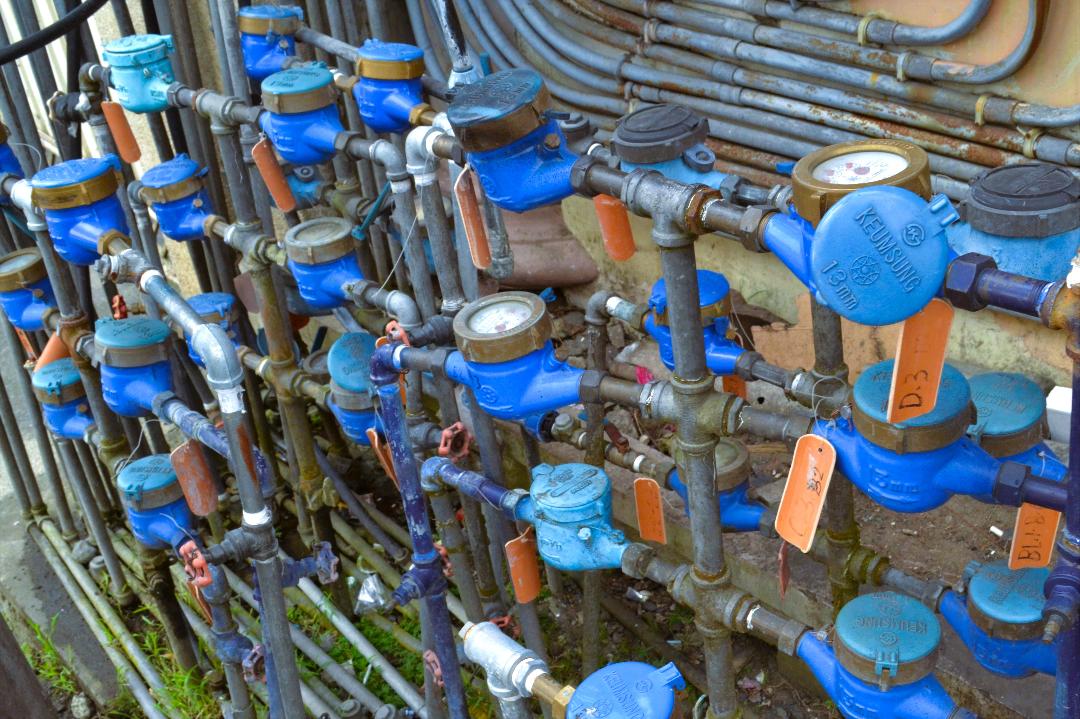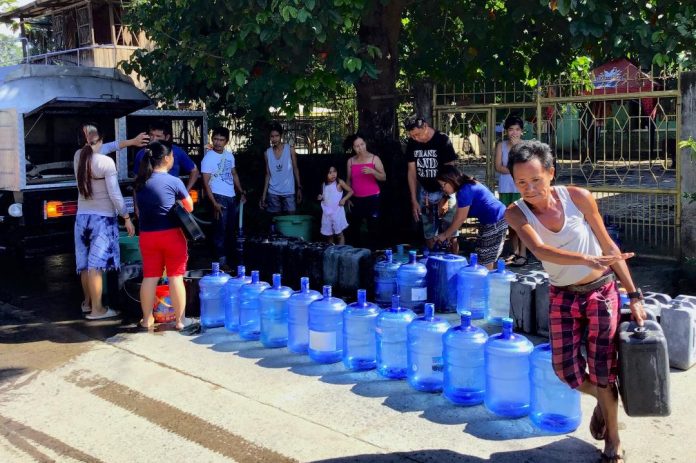Everyone, wherever they are situated, has the right to water. Unfortunately, billions of people around the world have no access to safely managed drinking water, defined as water that is accessible on premises, available when needed and free from contamination.
“In the Philippines, around one in 10 people still do not have access to improved water sources,” says the regional office of the World Health Organization (WHO).
“Water is an extremely important resource that we cannot live without. But there are Filipinos who are still being left behind in terms of access to improved water sources, especially in rural communities,” the United Nations health agency said.
Although the country is surrounded by water, the water crisis is already prevalent.
For instance, Davao City, which prides itself as having the best fresh water in the country, already has a water problem. At one time, a managing editor of a local daily complained of not having water in their barangay for a couple of hours.
A friend posted a comment that in her area, the drip was so miniscule that she had to wait for a pail to be filled up with water for 30 minutes. She called the water district to see if there was a repair being made and the other end answered there was none.
It may be unthinkable to have a water crisis, but a study done in 1991 by the Japan International Cooperation Agency has identified Davao City as among the nine major cities in the country as “water-critical areas.” The other eight were Metro Manila, Metro Cebu, Baguio, Angeles, Bacolod, Iloilo, Cagayan de Oro and Zamboanga.
Some 75 kilometers away from Davao City, in the town of Bansalan, Davao del Sur, residents of barangay Poblacion Dos were having hard times since for a week already there was no water gushing from their faucets. It means no water to drink, to cook foods, to be used for bathing and washing clothes. A few considered the situation a nightmare.
Unlike in the past when you can drink tap water directly from your faucet, such is not the case anymore. These days, people buy mineral water just to quench their thirst. In fact, plastic bottles of water are being sold in bus terminals and even in some sidewalks.
“Water isn’t just a commodity. It is a source of life,” Dr. Sandra Postel, director of the Massachusetts-based Global Water Policy Project, told Edge Davao in an exclusive interview.
Dr. Postel believes water problems will trail climate change as a threat to the human future. “Although the two are related, water has no substitutes,” she explains. “We can transition away from coal and oil to solar, wind and other renewable energy sources. But there is no transitioning away from water to something else.”
To think, water is finite. Less than 3% of the world’s water is fresh, and more than 75% of this is frozen – mainly at the North and South Poles. Of the remaining freshwater, 98% lies underground. People and land-dwelling animals can only access about 0.01% of all the world’s water.

“World demand for water doubles every 21 years, but the volume available is the same as it was in the Roman times,” observes Sir Crispin Tickell, former Briths ambassador to the United Nations and one of the organizers of the 1992 Earth Summit. “Something has got to give.”
Around the globe, water tables are falling, underground aquifers are being depleted, lakes are shrinking and wetlands crucial to the survival of plants and wildlife are drying up. But despite all these, the international community ignored the signs.
Water is used in different ways. Domestically, water is utilized by households for drinking, washing, bathing, cooking, watering of gardens and other domestic uses. A household of five needs at least 120 liters of water per day to meet basic needs, Worldwatch Institute said.
“A person can survive only three to five days without water, in some cases people have survived for an average of one week,” says thewaterpage.com. “Once the body is deprived of fluids the cells and organs in the body begin to deteriorate. The presence of water in the body could mean the difference between life and death.”
According to the WHO, inadequate and intermittent water supply can have serious health consequences. “When water is scarce, people are often forced to rely on drinking water sources that may not be safe,” the UN health agency explains. “They may also lack sufficient water for basic hygiene – to wash themselves and their clothes, and to prevent infection including from foodborne and waterborne diseases.”
In addition, “low or negative water pressure in pipes due to short supply can attract contaminants that will put water quality at risk when the supply is restored,” the WHO says.
Water is also used for industrial purposes – in factories, industrial plants and mines, including the use of water as an ingredient of a finished product. Water is likewise needed for recreational purposes like those in swimming pools, water skiing, golf courses and other similar facilities in resorts.
Agriculture, however, is the biggest consumer of water. “The challenge is not to get enough water to drink, but to get enough water to produce food,” said Dr. Lester R. Brown, president of the Washington, D.C.-based Earth Policy Institute. “We drink, in one form or another, perhaps four liters of water per day. But the food we consume each day requires 2,000 liters of water to produce, or 500 times as much.”
For instance, to raise a ton of rice, you need a thousand gallons of water, according to the International Rice Research Institute. Some studies show that 89% of Filipinos consume rice daily. “Agriculture is where future water shortages will be most acute,” commented Time’s Michael S. Serrill.

Data presented by former Agriculture Secretary William Dar showed agriculture to account for 80% of water usage in the country. By 2025, the water demand may increase to 72,973 million cubic meters.
For domestic and municipal uses, the water demand by 2025 is expected to be 8,573 million cubic meters while the industrial demand is 4,997 million cubic meters.
Back in 1746, American statesman Benjamin Franklin said: “When the well’s dry, we know the worth of water.”
“Unlike energy crisis,” commented Klaus Toepfer, former executive director of the United Nations Environment Program, “the water crisis is life threatening.”
Water – not oil! – is the precursor of war in the coming years. “Wars of the next century will be over water,” warned Ismail Serageldin in 1995. Crown Prince Hassan of Jordan said the 1967 Six-Day War was caused by tensions over the Jordan River and its tributaries. “It’s simply a question of survival,” said then Israeli Water Commissioner Meir Ben Meir. “Thirst for water is an ignition to violence.”







